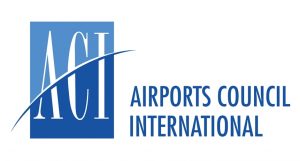
Quickstep announced it has signed a collaborative project with Spirit Aerosystems.

The project will develop the use of Quickstep’s proprietary manufacturing process technology, AeroQure, to produce an aircraft structural component. The parties will work to validate AeroQure as a commercial aerospace production solution, capable of meeting aerospace quality and performance requirements, as well as reduced product cost and high production rates. Quickstep has already obtained positive aerospace results with panels robotically laid-up and cured using AeroQure. The Qure manufacturing process has demonstrated reduced cycle times, substantially increased automation and step-change cost performance in non-aerospace applications. The next step will include preforming automatically laid-up laminates to a final geometry representative of an aerospace production part provided by Spirit. These prototype parts will be tested, both in Australia by Quickstep and the US by Spirit, to confirm they meet aerospace mechanical requirements. Quickstep CEO Mark Burgess said “in partnership with the Advanced Manufacturing Growth Centre and several global industrial partners over the next 12 months this project will generate the foundation of a fully integrated industrial solution, paving the way towards future production contracts. It is an extremely exciting development and validation of our ongoing investment in composites research and development.”

CAO posts net profit:
China Aviation Oil (Singapore), the largest physical jet fuel trader in the Asia-Pacific region, announced revenue of US$5.37 billion and a net profit of US$23.57 million for the half year ended 30 June 2020. CEO Wang Yanjun said “the COVID-19 pandemic has brought about unprecedented impact on the aviation industry, with corresponding drop in global demand for jet fuel, along with sharp falls in oil prices globally. Despite the increased global economic and demand uncertainties which has inevitably impacted the businesses of CAO and its associated companies significantly, CAO’s businesses have remained stable for the first half of the year to deliver a set of creditable results, aided by the Group’s measures to proactively seize market opportunities, continuously evolve our business models and curtail expenses.” The company said revenue decreased 44.51 percent to US$5.37 billion due primarily to the decrease in oil prices and total supply and trading volume. Gross profit declined 20.30 percent to US$22.87 million due mainly to lower gains from trading activities and jet fuel supply business which were impacted by the COVID-19 pandemic Total supply and trading volume decreased 24.41 percent to 13.16 million tonnes, while volume for middle distillates decreased 25.91 percent to 7.67 million tonnes. Share of profits from associates decreased 89.84 percent to US$3.89 million, due mainly to lower contribution from the Group’s key associate, SPIA.

Pegasus signs EASA COVID-19 protocol:
Pegasus Airlines has signed up to the COVID-19 Aviation Health Safety Protocol published jointly by the European Union Aviation Safety Agency and the European Centre for Disease Prevention and Control. The protocol, which is an operational guide for the management of air travellers and aviation personnel in relation to the COVID-19 pandemic, includes the measures defined by EASA and ECDC to ensure the health safety of air travellers and aviation personnel. Pegasus Airlines CEO Mehmet Nane said “as we always say, as Pegasus Airlines, we value our guests and personnel above all. For this reason, long before our flights were reinstated, we had been adapting to the new situation resulting from the COVID-19 pandemic by focusing on the implementation of health and safety measures. This is because taking the necessary precautions and following the rules is of critical importance to ensuring healthier and safer travels. Before restarting our domestic and international flights, we took all the necessary measures to ensure that our guests and personnel fly in the healthiest and safest way possible. Now, we have also signed up to the COVID-19 Aviation Health Safety Protocol. By joining this protocol, we promise to comply with EASA standards and support the creation of common standards worldwide for healthier and safer air travel while the effects of the COVID-19 pandemic continue.”

Red flags on AirAsia X financials:
AirAsia X posted a net loss of 549.7 million ringgit (US$129.6 million) for its first quarter ended March 31, 2020 (1QFY20), the long-haul low-cost carrier’s biggest ever quarterly loss. The loss and the ongoing shutdown in international travel also caused the airline’s auditor, Ernst & Young, to raise a red flag on its financials. The auditor announced to the stock exchange that there may be “significant doubt” over the carrier’s ability to continue as a going concern in respect to its financial position. The airline’s loss is a contrast to its net profit of 43.33 million ringgit in the previous corresponding quarter. Quarterly revenue shrank 21 percent to 924.1 million ringgit compared to 1.17 billion ringgit last year. Going forward, the airline said it expects to remain in hibernation mode and the prospects of resuming scheduled flights is tied to the recovery in international air travel demand in the coming months hinged on eases in border controls and travel restrictions. “Despite having no clear visibility on the timing of recovery at this point in time, the company remains confident that demand will pick up towards the end of 2020,” it said. AirAsia X also said it has actively engaged with key stakeholders in the industry, including government ministries, agencies and partner destination countries to mitigate the impact from the temporary downturn in air traffic and prepare for when recovery comes. AirAsia X Malaysia CEO Benyamin Ismail said “the COVID-19 pandemic is without doubt an unprecedented situation for the world and for the travel and tourism industry in general. Amidst the drop in global travel demand, the company remains proactive in implementing measures to cut cost and conserve cash.”

IATA says cargo recovery continues:
The International Air Transport Association (IATA) released data for global air freight markets in June showing improvement, but at a slower pace than some of the traditional leading indicators would suggest. Global demand, measured in cargo tonne-kilometres (CTKs), fell by 17.6 percent in June (-19.9 percent for international operations) compared to the previous year. That is a modest improvement from the 20.1 percent year-on-year drop recorded in May. Global capacity, measured in available cargo tonne-kilometres (ACTKs), shrank by 34.1 percent in June (‑33.9 percent for international operations) compared to the previous year. This was on par with the 34.8 percent year-on-year drop in May. Belly capacity for international air cargo shrank by 70 percent in June compared to the previous year due to the withdrawal of passenger services amid COVID-19. This was partially offset by a 32 percent increase in capacity through expanded use of freighter aircraft. Asia-Pacific airlines saw demand for international air cargo fall by 20 percent in June 2020 compared to the same period a year earlier. This was a slight deterioration over the 18.8 percent drop in May. Despite manufacturing starting to pick up in the region, demand was impacted by the reduction in shipments of PPE by air. International capacity decreased 32.3 percent.

ACI World data reveals catastrophic impact of pandemic on global traffic:
Airports Council International (ACI) World data has revealed that global passenger traffic declined by -91.3 percent year-over-year in May as a result of the ongoing COVID-19 pandemic. This is slightly above the worst decline of global passenger numbers in the history of the aviation industry of -94.4 percent which was recorded the previous month in April. Global passenger traffic continued its dramatic decline, falling more than 10 percentage points compared to the prior month to -52.5 percent for the first five months of 2020. The 12-month rolling average for the global industry is also continuing with the downward trend and recorded -19.3 percent by the end of May. As in previous months, the effect of the COVID-19 pandemic on the air freight industry was not as significant in May when compared to the passenger market. Global air freight volumes posted slightly better results in May compared to April with a decline of -17.9 percent compared to May 2019 resulting in a -12.8 percent drop for the first five months of 2020. The global 12-month rolling average continued to move further into negative territory at -6.7 percent by the end of the month. Besides North America and Asia-Pacific, all other regional markets posted declines higher than -95 percent of their global passenger traffic. The start of a slow recovery of the domestic traffic helped North America and Asia-Pacific to post slightly better figures with decreases of -90.3 percent and -82.5 percent respectively. International passenger traffic continues to be virtually halted with all regions recording decline above -98 percent for a second consecutive month. Global international and domestic markets posted unprecedented declines for a second month in a row, falling by -98.6 percent and -85.3 percent, respectively. The 12-month rolling average for the international segment was recorded at -20.2 percent and the domestic segment at -18.5 percent. Domestic passenger markets remain severely affected by the ongoing crisis, but North America and Asia-Pacific have shown signs of a slow recovery. Decline are however still significant. North America posting a -88.8 percent decline while Asia Pacific recorded a -73.2 percent drop in domestic passengers. Other regions all recorded declines above -90 percent in May. The COVID-19 outbreak continues to heavily impact all major freight markets except for North America, but small gains started to emerge in May when compared to the previous month. Globally, air freight volumes were reduced by almost a fifth in May, with a drop of -17.9 percent compared to May 2019.




0 Comments